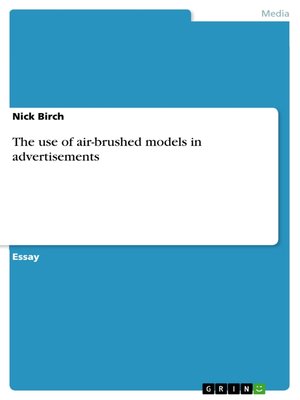
Sign up to save your library
With an OverDrive account, you can save your favorite libraries for at-a-glance information about availability. Find out more about OverDrive accounts.
Find this title in Libby, the library reading app by OverDrive.



Search for a digital library with this title
Title found at these libraries:
| Loading... |
Essay from the year 2011 in the subject Communications - Public Relations, Advertising, Marketing, Social Media, grade: 1.1, Central Queensland University, course: Advertising Design Communication, language: English, abstract: It is of no contention that the air-brushing of models in advertisements has been a central issue amongst body image advocates. Re-touching images of people has created problems for body-conscience individuals as well as advertisers although it is questionable whether the significance of the problems has yet outweighed the advantages of the practice. Part of the ethical responsibility of designers is to be aware of the effects their designs have on people, but there may be times when designers do not have a choice. Advertisers respond to the market in a supply-and-demand manner and will continue to deliver images that are successful, or more aptly recognised: as profitable. Design critic Alice Rawsthorn categorises 'most graphic design ... as "quietly good design", (that is, we never) really stop and look at it in the way that we might stop and look at a painting or a work of art. We absorb the messages, but only rarely take time to look at how the message has been constructed. In other words, we gulp the wine, but never look at the glass' (Shaughnessy, 2008). It is interesting that the glass that delivers images of people in particular gains so much attention.






